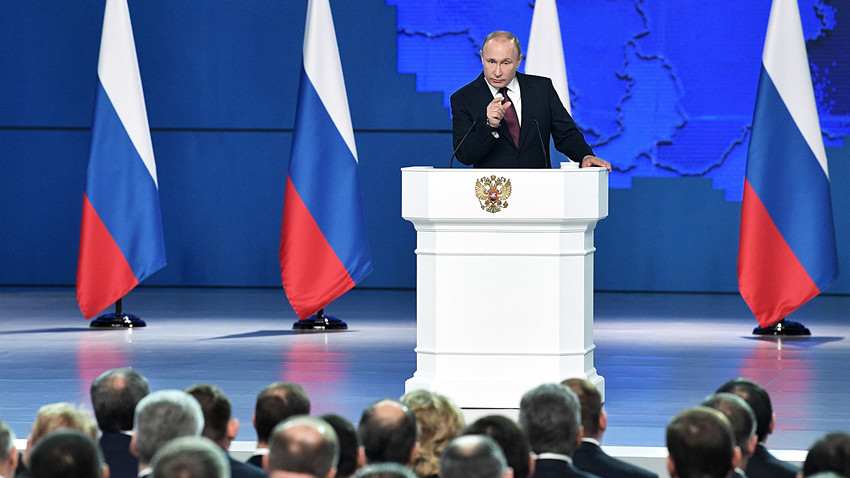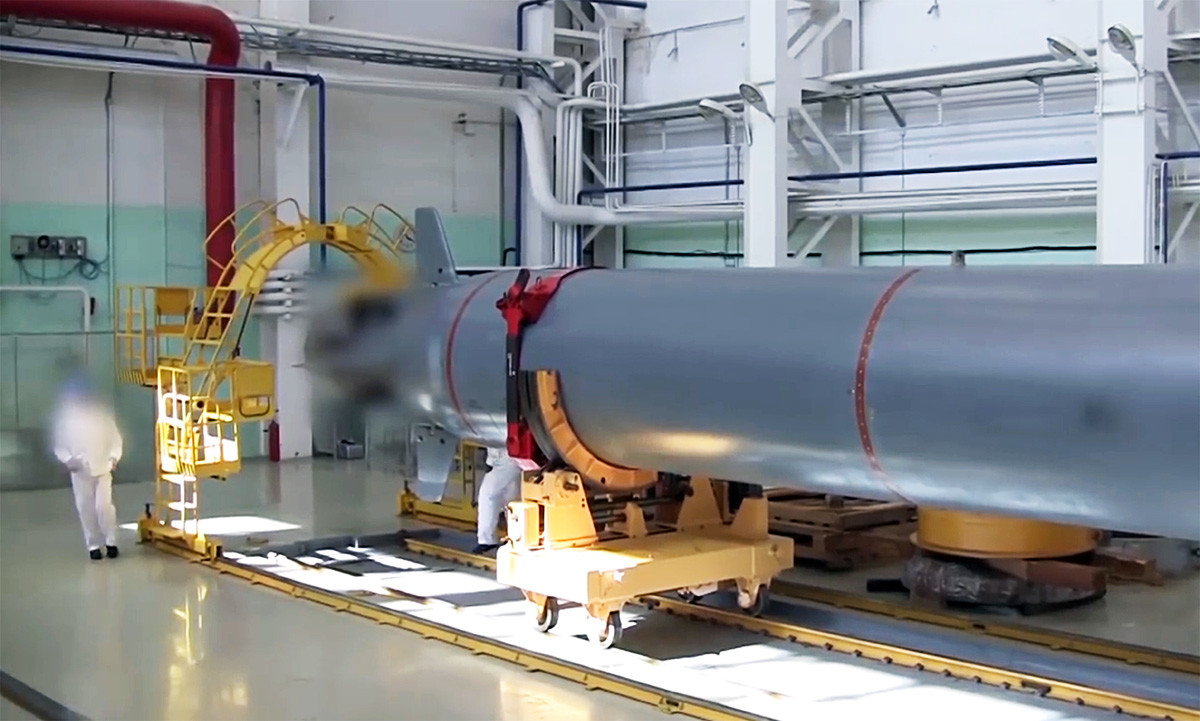
Russian President Vladimir Putin addresses the Federal Assembly, including the State Duma parliamentarians, members of the Federation Council, regional governors and other high-ranking officials, in Moscow, Russia February 20, 2019
ReutersIn the spring of 2019 Russia is to launch an atomic submarine with the first ever Poseidon
"The Poseidon unmanned underwater vehicle, with unlimited range, is undergoing tests successfully... In this
Russia Beyond has learned from the Russian Federation Defense Ministry that the weapon the president was talking about is "an absolute reality, and already physically exists".
"This weapon is hundreds of times cheaper than any of the systems deployed against Russia. As of today, maritime proving-ground tests of the Poseidon underwater drone have been successfully completed. And the personnel of the future submarine delivery platform
According to the military, the main goal of the new project is to ensure Russia's guaranteed security without increasing defense budget spending and without Russia being dragged into a new arms race.

All work on Poseidon is classified as "top secret". The exact tactical-technical characteristics and yield of the warhead have not been disclosed by the military, but they did share some of the information with Russia Beyond.
Firstly, Poseidon is an integral part of the latest trend in the development of Russian weapons of the future. "Russia wants to move to fully automated weapon systems and the development of unmanned weapons for the ground troops, the navy and the air force".
Secondly, as part of this
"Poseidon is a development of the Soviet-era T-15 nuclear torpedo project. It was designed to strike enemy ports and coastal bases, causing a huge tsunami and shock wave to sweep through all installations lying in its path," according to Professor of the Academy of Military Sciences Vadim Kozyulin.
In the Soviet period, he says, there was no appropriate submarine that could serve as a delivery platform for the torpedo, which was around 23 meters in length and 40 tonnes in weight.
"The main job was done by the battery, which allowed the torpedo to reach a speed of 29 knots (around 48 km/h). The Soviet weapon had a strike range of around 30 km," he added
"Modern technology makes it possible to implement the project and cut its costs. Now Poseidon is to join Russia's deterrent forces and become part of her nuclear triad," the expert concluded.
If using any of Russia Beyond's content, partly or in full, always provide an active hyperlink to the original material.
Subscribe
to our newsletter!
Get the week's best stories straight to your inbox